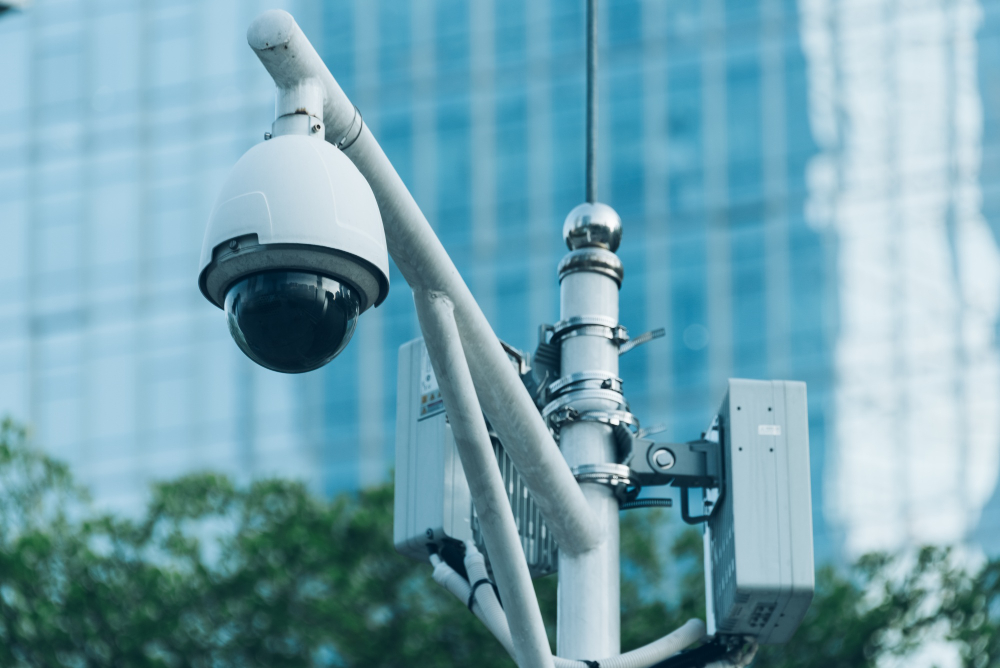Introduction
As urban populations continue to surge, cities around the world are under increasing pressure to manage traffic congestion, ensure road safety, and streamline mobility. Traditional traffic management systems—reliant on static infrastructure and manual monitoring—have proven insufficient in coping with the complexities of modern urban environments. This has paved the way for the rise of intelligent, integrated solutions that harness cutting-edge technology. Among these innovations, the smart city surveillance system has emerged as a critical tool in transforming how cities monitor, control, and optimize traffic flow.
The Evolving Landscape of Urban Traffic Challenges
Urbanization has significantly impacted road infrastructure, leading to higher vehicle density, frequent congestion, and a rise in traffic-related incidents. City planners and traffic authorities face a dual challenge: maintaining efficient mobility while ensuring public safety. The reactive nature of traditional traffic systems often results in delayed responses to violations, accidents, or bottlenecks, limiting their effectiveness.
Moreover, manual enforcement and sporadic monitoring contribute to inconsistent compliance with traffic rules. In this environment, a data-driven and proactive approach becomes not just beneficial but necessary.
The Role of Smart Surveillance in Traffic Management
A smart city surveillance system leverages technologies such as artificial intelligence, computer vision, and real-time data analytics to monitor traffic activity across large urban landscapes. These systems are equipped to detect violations like red-light jumping, over-speeding, wrong-way driving, and illegal parking, enabling authorities to take swift and informed actions.
Through high-resolution imaging and intelligent analytics, smart surveillance infrastructure ensures continuous monitoring without human bias or fatigue. By analyzing vehicle patterns, identifying anomalies, and capturing actionable data, these systems not only enforce laws but also support strategic decision-making for urban planning and congestion management.
Smart city surveillance system solutions are especially valuable at busy intersections, toll booths, and accident-prone zones where human oversight alone cannot keep pace with the demand.
Real-Time Monitoring and Violation Detection
One of the core advantages of intelligent surveillance is its ability to process and react to real-time data. Cameras embedded with AI-powered analytics continuously scan roads for violations and unsafe behavior. This includes:
- Red-light violations detected by motion sensors and time-stamped imagery
- Speed detection through AI-calibrated radar systems
- Vehicle classification and number plate recognition for better tracking
- Illegal maneuvers, such as wrong turns or U-turns in restricted areas
These insights are then relayed to command centers or enforcement teams, enabling rapid intervention. Additionally, storing this data helps in long-term analysis, aiding in redesigning problematic junctions or adjusting signal timing for better flow.
Enabling Smarter Urban Planning Through Data
Surveillance systems are not just for enforcement; they’re crucial sources of urban traffic intelligence. With the ability to generate detailed reports and heatmaps, these systems allow city officials to identify patterns, assess peak congestion periods, and evaluate the effectiveness of road policies.
This data-driven approach empowers governments to implement targeted changes—like altering lane assignments, redesigning crossings, or deploying traffic calming measures—backed by actual evidence rather than assumptions.
Furthermore, such intelligent systems can be integrated with other smart city components, including public transportation networks and emergency response units, creating a holistic and responsive urban ecosystem.
AI-Based Traffic Solutions are Reshaping City Roads
Integrating artificial intelligence with surveillance has redefined the efficiency and scope of urban traffic solutions. These AI-enhanced systems can predict traffic congestion before it occurs, reroute vehicles in real time, and reduce manual intervention.
Recent advancements have shown how AI-based Traffic Solutions are Improving Traffic Conditions, reducing congestion and enhancing public safety across cities. Predictive algorithms can assess traffic volume fluctuations and recommend changes to signal timings, while machine learning models identify high-risk behavior that often precedes accidents.
This proactive management model marks a significant departure from traditional reactive approaches, leading to safer and more sustainable urban mobility.
Benefits for Public Safety and Policy Enforcement
Smart surveillance directly supports law enforcement and public safety initiatives. With automated tracking of violations, authorities can:
- Improve compliance through consistent and unbiased monitoring
- Reduce the number of on-road personnel required for manual checks
- Enhance public trust by promoting transparency and accuracy in enforcement
- Establish reliable evidence for dispute resolution or legal action
Additionally, having a clear and continuous digital trail of traffic behavior helps in both educational campaigns and policy development, encouraging responsible driving culture within the population.
The Future of Smart City Mobility
As technology continues to evolve, so will the capabilities of urban surveillance systems. Future developments may include deeper integration with autonomous vehicle networks, AI-driven pedestrian safety analytics, and real-time collaboration with emergency response systems.
Moreover, advancements in cloud computing and edge processing will further streamline the storage and analysis of vast video data, making these systems more scalable and cost-effective for cities of all sizes.
Governments and urban planners will increasingly turn to intelligent surveillance as a foundation for future-proof transportation infrastructure, one that is safe, efficient, and adaptive.
Conclusion
Modern traffic challenges require modern solutions. A smart city surveillance system offers more than just visual monitoring—it delivers a comprehensive, intelligent framework that enables real-time decision-making, long-term planning, and proactive enforcement. By combining AI, automation, and data analytics, cities can overcome the constraints of traditional traffic control systems and usher in a new era of safe, sustainable urban mobility.
In a world where the success of urban centers hinges on their ability to move people and goods efficiently, investing in smart surveillance isn’t just a technological upgrade—it’s a critical step toward building smarter, safer, and more resilient cities.



